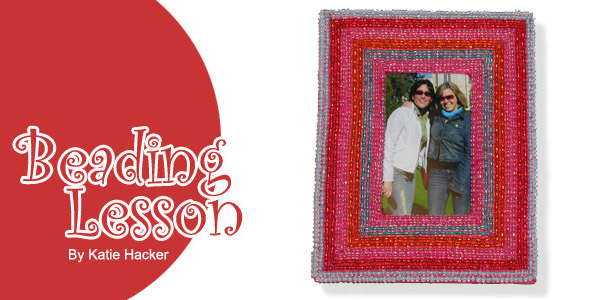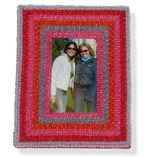
303-2
Beading Lesson
How to Choose the Right Thread and Needles
By: Katie Hacker
Sponsor: Beadalon®
Silk cord has been used for centuries to create knotted jewelry. It's available in a variety of colors and diameters. Poly nylon cord is a less expensive, synthetic alternative to silk. It has less stretch and is also available in a variety of colors and sizes. Both styles come with a needle attached.. Choose the cord diameter based on the bead hole size.
Dandyline braided beading thread is a super strong and flexible thread that is specially made to provide softness and near 0 stretch. It's also water resistant. Use it for weaving seed beads and for detailed beadwork like peyote stitch or right angle weave. You can also use it to stitch beads to fabric. It’s available in a variety of diameters, which you choose based on the bead hole size. When choosing the diameter, keep in mind that some patterns call for the thread to pass more than once through the beads.
Nymo thread is a very thin nylon thread that's traditionally used for intricate beadwork like peyote stitch or weaving on a loom. The main difference between Nymo and Dandyline is that Nymo is a non-twisted fiber filament and Dandyline is a braided thread. Dandyline is a newer, stronger product than Nymo, but a lot of traditional beadwork patterns call specifically for Nymo thread.
Beading needles are different from regular sewing needles because beading needles have eyes that are the same size as the rest of the needle. Sewing needles usually have slightly larger eyes. It’s important to use beading needles so the eyes will fit through seed beads when threaded.
 Collapsible
eye needles are flexible needles that have an eye that closes when pulled
through a bead. This is particularly nice when stringing small beads,
like seed beads. The large eye is easy to thread and can be used with
many different sizes of cord. The long needle makes it easy to string
lots of beads at once. Twisted beading needles also have a large eye to
make threading the needle easier.
Collapsible
eye needles are flexible needles that have an eye that closes when pulled
through a bead. This is particularly nice when stringing small beads,
like seed beads. The large eye is easy to thread and can be used with
many different sizes of cord. The long needle makes it easy to string
lots of beads at once. Twisted beading needles also have a large eye to
make threading the needle easier.
![]() A big eye
needle is made from high tensile wire and opens in the center to accept
almost any kind of thread. This is perfect for larger cords like Elasticity
stretchy cord, but the needle is too large to fit through most seed beads.
Use it for beads with larger holes.
A big eye
needle is made from high tensile wire and opens in the center to accept
almost any kind of thread. This is perfect for larger cords like Elasticity
stretchy cord, but the needle is too large to fit through most seed beads.
Use it for beads with larger holes.
Use hard beading needles when a stiffer needle is required, like when doing intricate beadwork or when adding beads to fabric. Use a needle threader to thread hard needles quickly and easily. Place the end of the threader through the eye, place the thread through the threader, and pull the threader back through the eye.
A bead spinner makes it easy to string lots of seed beads in a short
amount of time. To use one, pour some seed beads into the spinner. Thread
a flexible needle and place the needle tip against the inside of the spinner.
As you turn the spinner with one hand, the beads will load themselves
onto the needle. This is perfect for projects that require long strands
of seed beads, like beaded ornaments, bottles or candleholders.
| Project Images | |
 
|
|
.